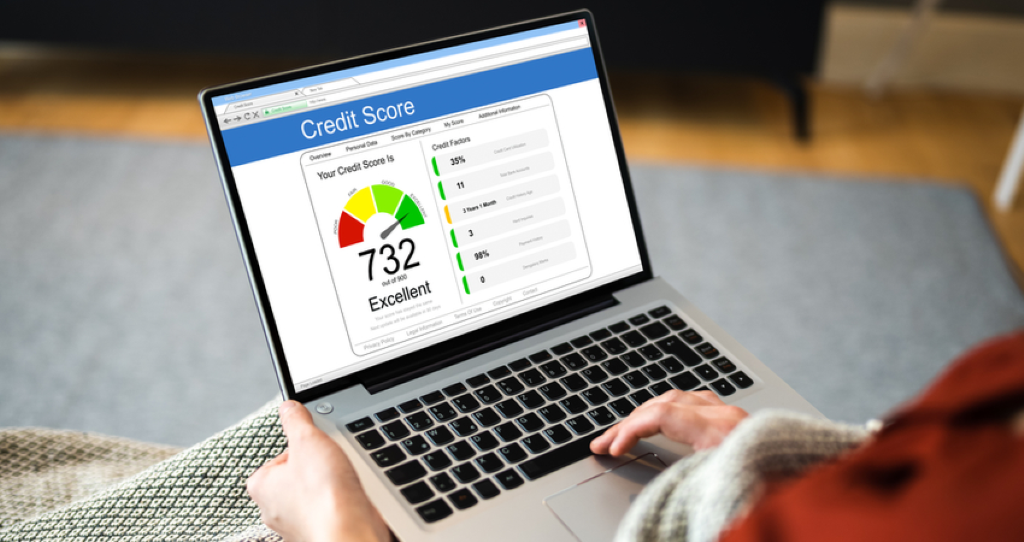What is a Credit Profile and How Can I Repair My Credit?

- When you have a good credit score, it helps save you tons of money in the long run.
- A bad credit score can be expensive, and chances are you may pay more money upfront.
- No credit can be similar to bad credit because lenders can’t gauge your creditworthiness with no credit score.
What is a credit profile/credit report?
A credit profile or credit report is a history of your credit all in one place. This history is then taken and calculated to form a three-digit number that makes up your credit score. This three-digit number ranges from 300 to 850.
The credit score range of 300 is low, and the 850 range is excellent. The most common credit-score models used in calculating your credit score are the FICO score and VantageScore. Credit score ranges are as follows:
- 580 or less is Poor
- 580-669 is Fair Credit
- 670-739 is Good
- 740-799 is Very Good
- 800+ is Exceptional
Any loan or payment agreement that you have given your social security number for and signed for is enlisted on your credit profile. This includes applying for loans, apartments, lines of credit, credit cards, or buying a home.
Recommended Read: Protect yourself against credit card fraud and identity theft.
You want to ensure that you keep a clean credit profile, which will come with a good credit score. For example, on-time payments and positive credit history will increase your score, while late payments, derogatory marks, and charge off/collections will decrease your credit score.
It is better to have a positive credit history on your credit profile versus nothing at all. This will let lenders know that you are a responsible individual they can trust with the money they loan to you.
Results of a Good Credit Profile
A good credit profile takes time to build. For example, on average, an 850-credit score takes 7-10 years of positive history.
Your credit profile comprises 35% payment history, 30% credit utilization or amount owed, 15% credit history, 10% credit mix, and 10% of new accounts.
On-time payments make up the biggest part of your credit profile. Therefore, it is important to always stay on top of your payments. All credit cards have a credit utilization score, and it’s recommended that credit card users stay under 30% of their credit limit.
Longstanding credit history is beneficial to lenders as it will help lenders determine how long you have had a credit history. In addition, lenders like to see different types of credit mixes, from credit cards to loans to mortgages. New accounts will account for a small percentage, but this can also help or hurt you.
Having a good credit profile can result in lower (or no) down payments, low-interest rates, and higher credit limits.
Results of a Bad Credit Profile
Establishing good credit can take years but ruining good credit can take a matter of a few months or sooner. A bad credit profile can result in larger down payments, shorter repayment periods, higher interest rates, and lower credit limits. A credit profile with no history and no credit score can be similar to having bad credit because lenders can’t determine your creditworthiness.

Image Credit: David Pereiras / Shutterstock.com
Soft Pull vs. Hard Pull
There are three major credit bureaus, Equifax, Experian, and Transunion. Credit bureaus are required by federal law to monitor what companies pull your credit. This is calculated as 10% of your credit score. It helps predict how risky you may be. The more inquiries, the higher your chances are of being denied.
A soft pull inquiry is when companies review your credit without having to make a lending decision. It is also considered a soft pull when you check your credit score. For example, when you apply for a bank job or new insurance, these companies tend to soft pull your credit report. Your score is not affected by a soft pull.
Furthermore, if companies decide to do a soft pull, with your permission, of course, it will not hurt your credit as much as a hard pull. Be sure that when your credit gets pulled, it is for good reasoning.
A hard pull inquiry does, however, affect your credit score. This tells lenders how well you may or may not be handling your creditworthiness. In addition, hard pulls are considered a negative item on your credit profile. Therefore, upon checking your credit profile and seeing an unauthorized credit pull, you should dispute it.
Cleaning Up or Rebuilding Your Credit Profile
To get started with cleaning your credit up, you have to know what is on your credit report. You are entitled to one free credit report per year through the company, AnnualCreditReport.com.
Recommended Read: Free weekly credit reports are available until April 2022
Next, you should look into cleaning up all of your personal information on your credit report. Those items can include multiple names or an alias, multiple dates of births, multiple addresses, and phone numbers. Believe it or not, spotting items like this on your credit report can help increase your score.
Narrow all personal information down to one name, date of birth, address, and phone number. Send in a copy of your identification card (ID) with verification of information so that the bureaus may update your report. It is also helpful to send in a copy of the highlighted errors on your report to make it easier for them to see the change.
Once you have completed this step, the next step is to check for any derogatory marks on your report. Things like this include bills that are in collections, charge-offs, bankruptcy, and multiple late payments. Verify that these are true derogatory marks before sending in a dispute letter.
Time to Dispute
Finally, it is time to dispute! Disputing can take a while (a couple of months to a year) to clear. Sometimes one round of dispute letters may work, and sometimes it may take more. Don’t give up. If there is an error on your credit report, then you want it corrected. In every dispute, always include a photocopy of your ID and a highlighted copy of the error you want to be corrected.
Additionally, include some form of documentation that provides proof of address. Forms of acceptable documentation if you don’t have an ID would-be driver’s license, birth certificate, divorce decree, and social security card. Forms of sufficient documentation that provide proof of address would be a utility bill, cell phone bill, W-2, or paystub.
Typically, a credit bureau will have between 30-45 days to respond to disputes. All disputes should be sent via certified mail. Certified mail ensures proper proof that your letter has been delivered to the right place as it requires a signature upon receiving. Always keep a copy of everything you send and never forget to follow up with a credit bureau.
As stated before, building a good credit score can take time, but it is well worth it. When you take the time to build your credit profile, it will benefit your financial future in the long run.
What other ways have you increased your credit score or helped to rebuild your credit? Share with us in the comment section below.
Main Image Credit: Shutterstock.com